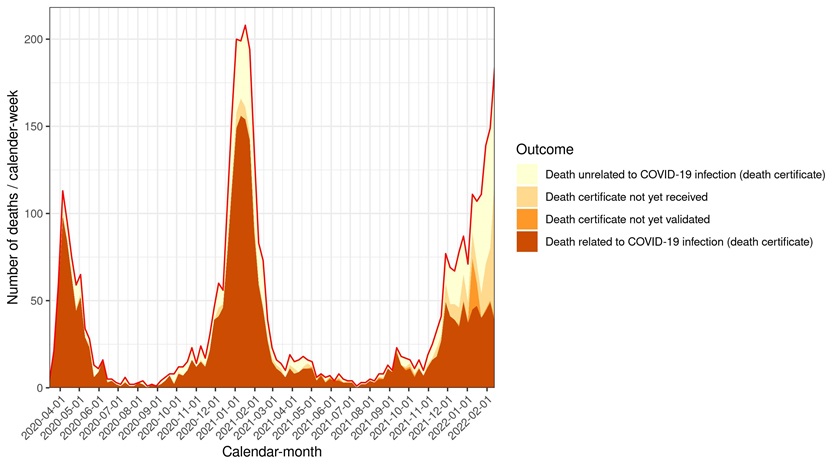Потому что так считают, омикрон значительно увеличил количество заражённых Ковид, так что все аварии, случайные смерти плюсуют в статистику к Ковид и этих смертей на волне омикрон уже больше чем смертей от самого Ковид. Ну так вот считали для быстроты простоты, тем более, что все сидели в пик по домам и если кто умирал с позитивным Ковид тестом , то чаще всего от самого Ковид. Видно на графике , с приходом омикрон соотношение резко поменялось
https://en.ssi.dk/news/news/2022/mortal ... se-numbers

https://inews.co.uk/news/science/why-de ... ns-1478566
Так что бустеры ни при чем, а с цифрами нужно обращаться аккуратноAnd the dashboard uses the “within 30 days of a positive Covid test” statistic, which is more timely than using death certificate information, which is more accurate but slower. So OWID, a rightly trusted and influential source, is showing information that makes the Danish situation look many times worse than it is.
The other problem is that “they died with Covid, not of Covid” has been a rallying cry of Coronavirus sceptics throughout the pandemic, and – most of the time – has been completely untrue. As we’ve seen, in Denmark in the first two waves, 90% of people who died after a positive test for Covid-19 were killed by Covid-19.
“It was a straw-man argument for two years, saying we were exaggerating the numbers,” says Mathieu. “And they were wrong for two years, because the incidence was low. But now, because of Omicron, it’s become true. If one person in every 10 has Omicron, then one car crash victim in every 10 will have Omicron.”